Apila library
The library is designed by JKMM Architects, one of the leading practices in Finland. The surface area is 3500 square meters, the public areas are located in two floors while the administration section is in the third floor. When viewed from above, the building resembles a clover, which gives the library its Finnish name Apila (Clover).
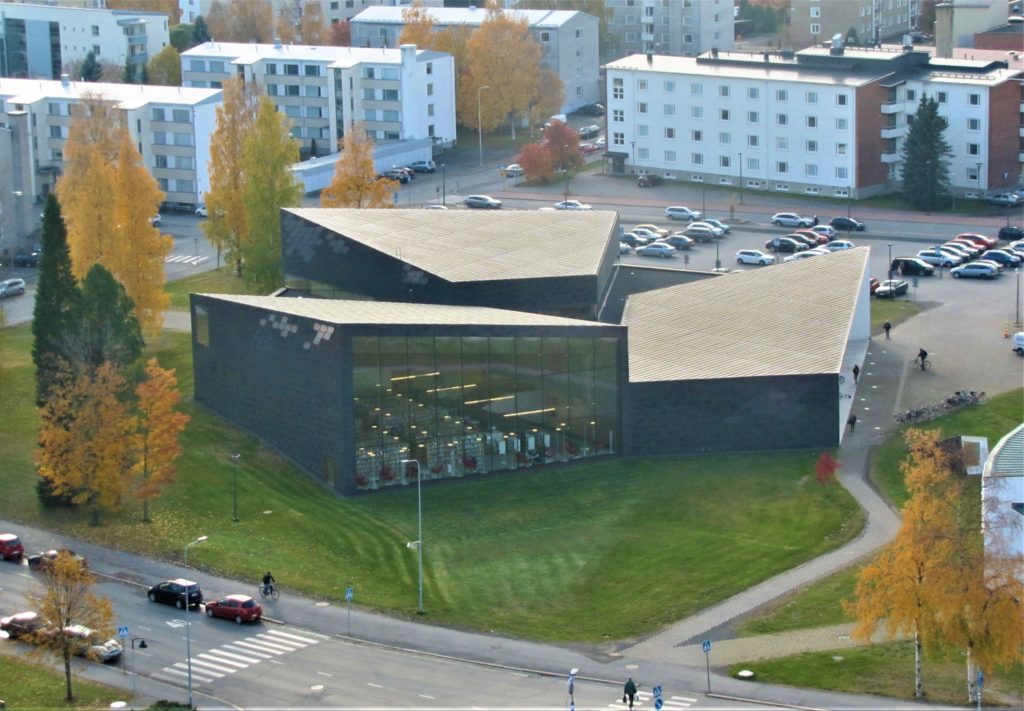
Libraries have become living rooms for the citizens and the Apila Library is one of the first new generation libraries in Finland. There is plenty of space, not only for books and other material, but also for events, encounters and working. The library gives access to knowledge, learning and new experiences for people of all ages.
The Apila Library is designed by JKMM Architects and it was completed in 2012. The library is located next to Seinäjoki civic center designed by Alvar Aalto. A central aspect of the design is a dialogue between the new Apila Library and the Aalto Library. These two buildings are connected via an undergound passageway.
”Seinäjoki Library’s large glazed facade frames generous views of the surrounding Aalto buildings. Inside, architectural space is created with sculptural use of concrete. Outside, the building is clad with copper. The materiality and massing is a nod back to Aalto’s architecture.” (www.jkmm.fi/work/senajoki-library-interior/)
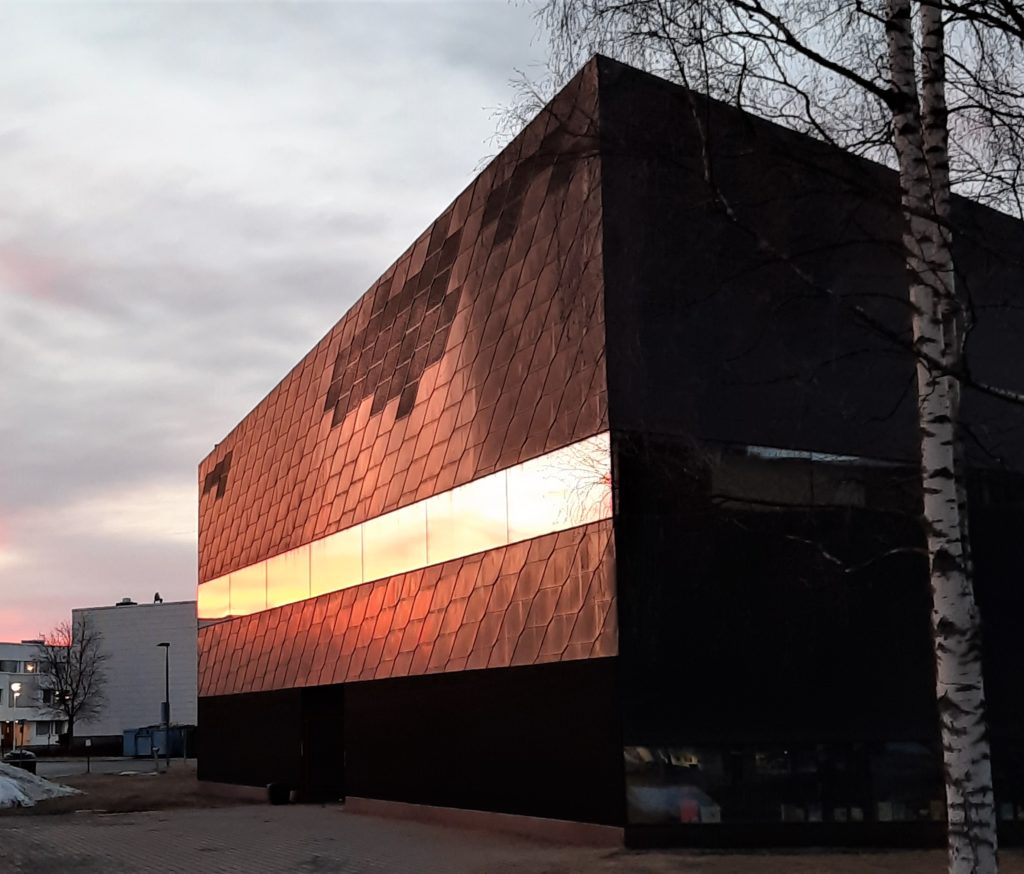
Library facilities
Apart from offering books and other materials to borrow the library has different facilities and services such as a café, working and meeting spaces, game room, exhibition spaces, Apila Verstas Makerspace and spaces for events. The facilities in the Aalto Library complete the services: Music room Pommari, multi-function room Studio, youth facilities, exhibition spaces, meeting and working rooms and a digitizing room.
Architecture
The core idea in designing Apila is that the architecture, spaces and the interior design are all part of the entity. The building has been influenced by Japanese origami, and the acoustics and the lighting was taken into consideration at the time the library was designed. The facade is covered with copper and the walls and ceilings are made of concrete. The large glazed facade combines Apila with the Aalto centre and offers a beautiful view. The folded ceiling in the adult lending department is an impressive detail.
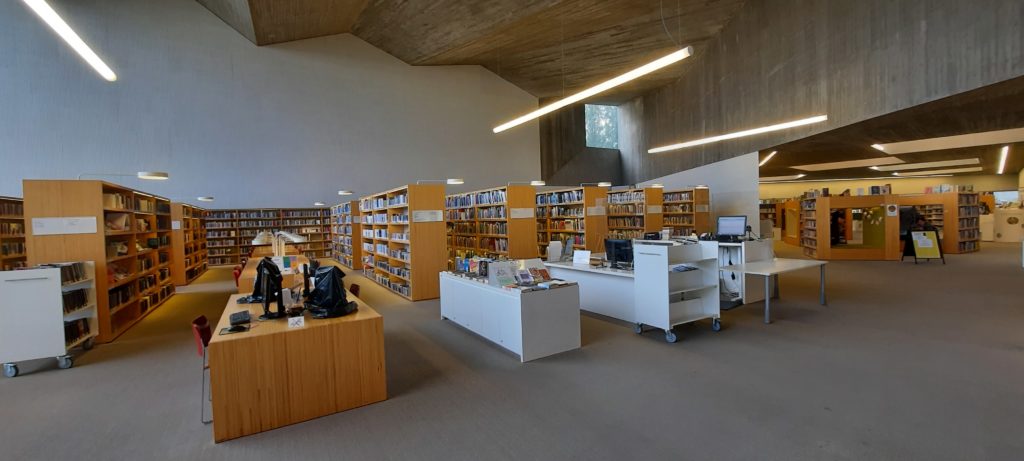
Apila is furnished with Finnish and international classic furniture pieces, for example Artek stools and armchairs and rocking chairs designed by Yrjö Kukkapuro. Many of the fittings and light fittings have been designed specially for the library. Children´s department Piilomaa has been inspired by a famous Finnish children´s book Piilomaan pikku aasi by Lea Pennanen. The exciting story invites children to read and play in the book houses and the lovely storytime room. The reading nooks and the Reading staircase are interesting details of the music and youth department.
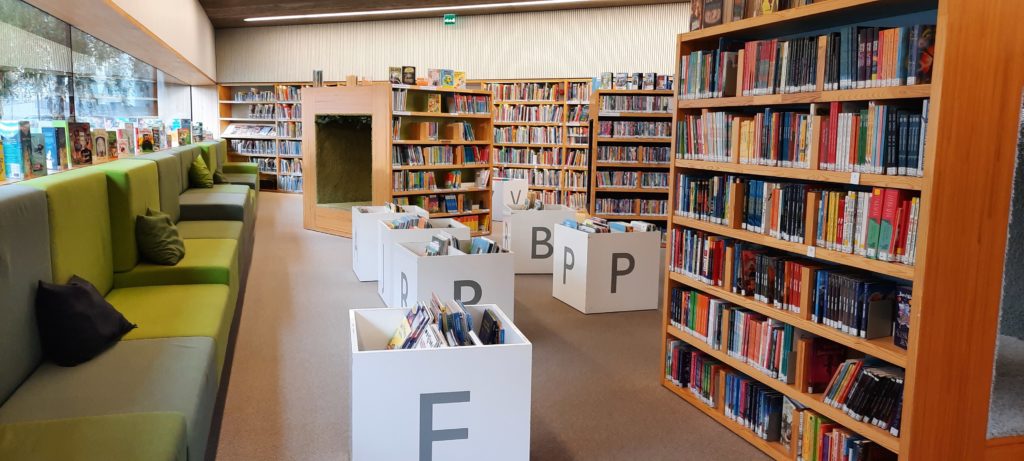
A noteworthy detail is also the relief in the ceiling in the news area. The relief is both a work of art and an acoustic element and it is designed by graphic designer Aimo Katajamäki. The Jaaksi Hall is a meeting room and venue for events and it is named after the lead architect Asmo Jaaksi.
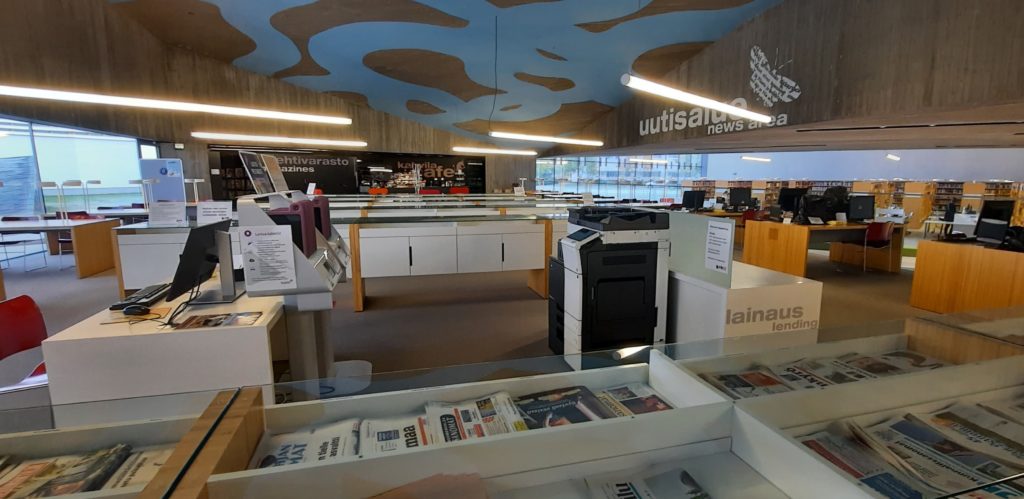
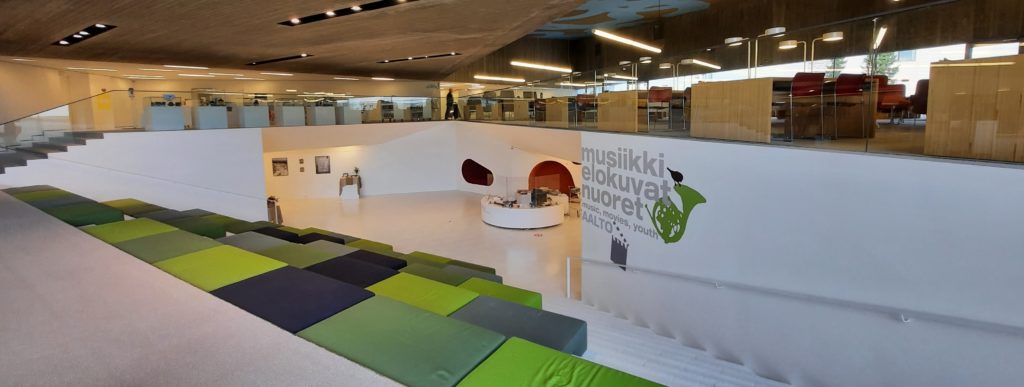
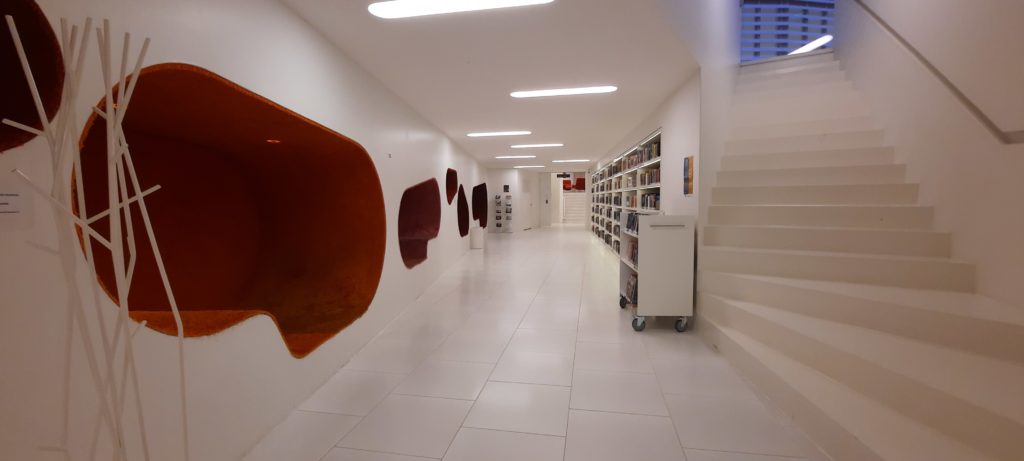
Awards, nominations, listings
- Concrete construction of the year 2012 (in Finland)
- Culture prize from local newspaper Ilkka 2012
- Shortlisted for EU Prize for Contemporary Architecture Mies van der Rohe Award 2012
- Päivi Meuronen was the interior decorator of the year 2012
- Honorable mention in European Copper in Architecture Awards 2013
- Nominated for The Finlandia Prize for Architecture 2014
- On the list of top 10 Finnish New architecture 2014 (Museum of Finnish architecture)
- Architectural Digest Mexico/Latin America listed buildings that shape the future orientation of contemporary architecture and the Apila Library was included 2016
